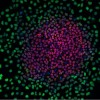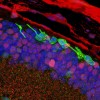UB Investigators Uncover Cellular Mechanism Involved in Krabbe Disease
Buffalo, NY, USA – A group of researchers at the University at Buffalo have published a paper that clarifies certain cellular mechanisms that could lead to improved outcomes in patients with globoid cell leukodystrophy, commonly known as Krabbe disease.











